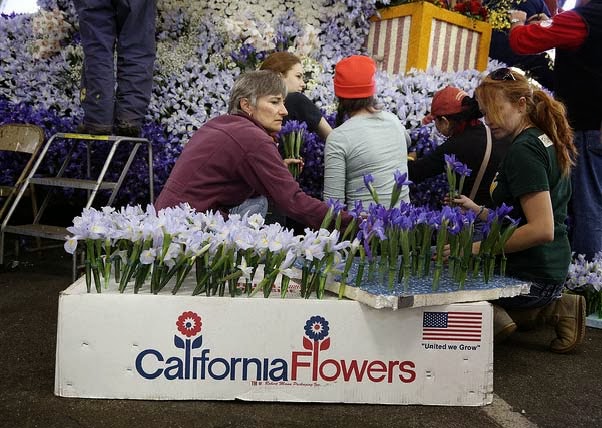CAL POLY FLOAT WINS INNOVATION AWARD AT ROSE PARADE
 A team of 60 Cal Poly college students took home the coveted Crystal City Innovation Award at this year’s Rose Parade in Pasadena, posted by Kasey Cronquist on CDFA Tuesday. The Innovation Award is given to the float that reflects the best use of imagination & innovation to advance the art of float building.
A team of 60 Cal Poly college students took home the coveted Crystal City Innovation Award at this year’s Rose Parade in Pasadena, posted by Kasey Cronquist on CDFA Tuesday. The Innovation Award is given to the float that reflects the best use of imagination & innovation to advance the art of float building.
Cronquist, CEO/Ambassador of the California Cut Flower Commission, believes there are three reasons why Cal Poly’s float entry, “Bedtime Buccaneers,” was deserving of an award for their imagination and innovation: design, flower choices and student team.
“This year’s float design was not only pleasing to the eye, but it was built with some very creative animation,” said Cronquist. “Not only were they able to make their bed appear to rock back and forth in that sea of Iris and have canons appearing to fire from under a quilt of roses, but they were also able to make the Iris have a rippling effect that made the Iris appear even more like the ocean it represented.”
 “With over 14,000 stems, no other Rose Parade float had as many home grown roses as Cal Poly’s float,” Cronquist stated. “I know for certain that the origin of flowers used in their design was not a criteria for the Innovation Award. However, it should be. Cal Poly’s commitment to become a certified “CA Grown” float was a great example of the team’s imagination and innovation,” indicating their unique perspective among the floats; “the average team in the parade sourced their roses, carnations and chrysanthemums from South America. However, due to the impact imports have had on our domestic flower farms in the past 20 years, Cal Poly’s team had to think creatively on how to ensure that their design would maintain a threshold of 85% or better fresh cut flowers from California.” In fact their float was pushing 95%.”
“With over 14,000 stems, no other Rose Parade float had as many home grown roses as Cal Poly’s float,” Cronquist stated. “I know for certain that the origin of flowers used in their design was not a criteria for the Innovation Award. However, it should be. Cal Poly’s commitment to become a certified “CA Grown” float was a great example of the team’s imagination and innovation,” indicating their unique perspective among the floats; “the average team in the parade sourced their roses, carnations and chrysanthemums from South America. However, due to the impact imports have had on our domestic flower farms in the past 20 years, Cal Poly’s team had to think creatively on how to ensure that their design would maintain a threshold of 85% or better fresh cut flowers from California.” In fact their float was pushing 95%.”









